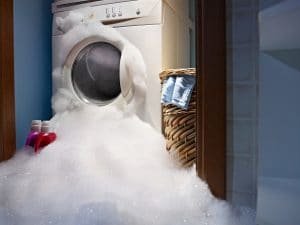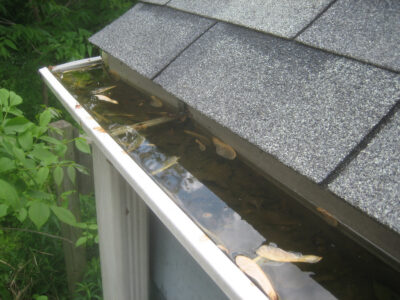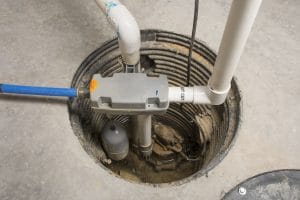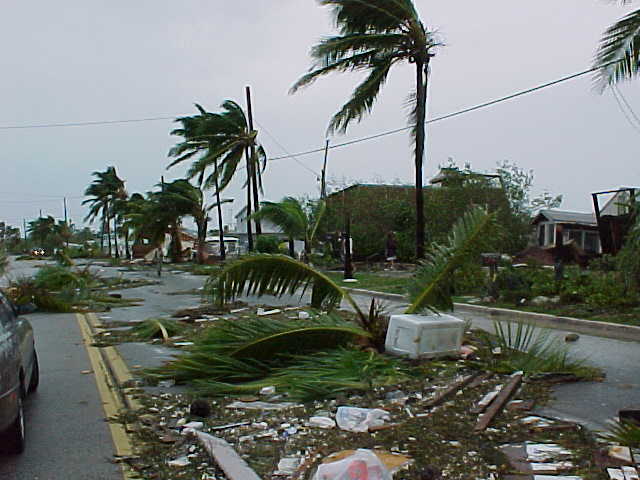When Should I Worry About a Wet Basement?
At some point in time, your basement will become wet. That’s because it is situated in the ground. The moisture from the soil will also add pressure on the basement walls as the water flows to the area of least resistance. This most often explains the cause of wet basements.
While some amount of moisture is normal, there is a point in which it becomes dangerous, action should be taken. When you start to notice water stains along the floor or walls or a mildew smell, it is time to worry about a wet basement.
Know If You Have a Wet Basement Before Buying the Home
If you are in the process of looking at homes, you should know every detail about the home before buying, as seller disclosures may not disclose all the details. They also may not know everything about the condition of their home, including water damage issues.
Signs of a Wet Basement

An overflowing washing machine could be the cause of water damage and floodingFlooding is the overflow or accumulation of water in areas t... More in your basement.
Before inspecting the basement yourself, you should know what to look for. Check the walls and floor for any water stains, as this may be the cause of an overflowing laundry tub, or water seeping in through the walls, floor, or basement windows.
If you smell anything damp or musty in the basement, trust your gut and try to pinpoint the source of the dampness. A quiet sump pumpA sump pump is a pump installed in a basement or crawlspace ... More is also a big sign that it’s not working properly, and you will likely have an issue. If you are pondering buying the home, the seller most likely may have had a water issue at one time.
There are also other subtle hints, like hidden moldMold is a type of fungus that grows in damp or humid conditi... More, leaking pipes or appliance leaks, so you will want to stay aware as you make your inspectionInspection is the careful examination and assessment of a pr... More.
Moldy Streaks or Spots
Always be on the look out for moldMold is a type of fungus that grows in damp or humid conditi... More. It can develop in a number of colors, including green, black, brown, or yellow, and every type of moldMold is a type of fungus that grows in damp or humid conditi... More is harmful to your health and home. While you won’t know for sure if it’s moldMold is a type of fungus that grows in damp or humid conditi... More until it’s been tested, you can take a good guess if it’s growing in the same spot as where water damage occurred 24 – 48 hours prior.
Surface Spalling
Surfaces will often flake away if there is salt in the water, especially for materials like brick, stone, or concrete. This is known as spalling, and it occurs when moisture tries to escape from within concrete, usually when its heated quickly.
Signs of Efflorescence
This term comes from a French phrase for “flowering out”, which produces a white or grayish ash on the walls. It may first appear to be chalky, but it can also be sparkly. Efflorescence is caused by the salt deposits left behind from evaporated water.
Potential Causes of Wet Basements

Usually caused by heavy rain or runoffRunoff is water from rain or other sources that flows over s... More water, the groundwaterGroundwater is water that exists beneath the earth’s surfa... More will seep through foundations and floors. Gutters will often overflow due to excessive rainfall, improper installation, and/or debris within the gutter that’s causing it to clog up.
Gutters located on the second floor may also drain into those on the first floor. They can also overflow if they’re frozen and suddenly thaw. Issues may be caused by downspouts that aren’t long enough to direct water away from the house or disconnected downspouts.
Improper grading or landscaping can also be an issue, causing water to flow toward the house instead of away from it, causing it to seep into the foundation and create water issues.
In areas with high humidityHumidity is the amount of moisture or water vapor present in... More, especially from HVAC systems without release valves, condensation will usually form along the pipes.
Water from the roof can also seep into the home if the walls of the home leadLead is a heavy metal that can be toxic to humans, especiall... More directly from the attic to the basement.
Possible Solutions for Wet Basements
Depending on the source of water damage, there are several solutions for wet and damp basements, usually for minor issues.
Redirect the Water
This is often a simple solutionA solution is a homogeneous mixture of two or more substance... More, but it isn’t thought of too often. Here are some ways you can direct water away from the basement.
- Clean out the gutters
- Install flashing on the roof and underneath the windowsills
- Regrade the landscape to slope away from the home
- Reconnect any disconnected downspouts
- Increase the efficiency of the downspouts by attaching extensions to push the water downhill
- Move sprinklers away from the house
Install French Drains
French drains can be installed underneath the slab or around the house, along with a drain tile.
- Dig a two-foot hole around the perimeter that’s at least six inches wide
- Attach a waterproofingWaterproofing is the application of materials or coatings de... More membrane to the home
- Line the membrane with clean rocks
- Lay the membrane in a four-inch perforated pipe with the holes facing up
- Backfill the rocks
- Replace the top layer of soil or sod
Install a Sump PumpA sump pump is a pump installed in a basement or crawlspace ... More

A sump pumpA sump pump is a pump installed in a basement or crawlspace ... More installed in a basement of a home, with a water powered backup system, will help prevent floodingFlooding is the overflow or accumulation of water in areas t... More in your basement.
Make sure there’s always a sump pumpA sump pump is a pump installed in a basement or crawlspace ... More installed in the basement which sends water to the street or at least directs water away from the foundation. You may also need to tuckpoint the interior and exterior walls, which involves removing and replacing the deteriorated mortar.
- Clean out the cracks and old mortar
- Fill with fresh mortar
- Allow everything to dry
- Cure the area by spritzing the joints with water daily for the first week
Use a DehumidifierA dehumidifier is a device that removes excess moisture from... More
If your problem isn’t severe, a dehumidifierA dehumidifier is a device that removes excess moisture from... More can be very helpful. Most will simply absorb the moist air, while others refrigerate or chill it, which can drip off.
Water Damage RestorationWater damage restoration is the professional process of clea... More
For basements with severe cases of water damage, it’s important to contact a water damage restoration team as soon as possible. Especially after a flood or heavy rain, water damage can easily spread and ruin porousPorous describes a material that contains small openings or ... More materials like drywall, wood flooring, carpeting, and other furnishings. MoldMold is a type of fungus that grows in damp or humid conditi... More can also develop within 24 – 48 hours, making matters much worse.
Many disaster restoration companies are available 24/7 to respond right away. If there is standing water, they will use professional water extraction equipment to have it removed while dryingDrying is the process of removing moisture from materials, s... More out airborne moisture to restore dry conditions. Any soiled drywall and other porousPorous describes a material that contains small openings or ... More materials will also be removed and in most cases, and replacements will be installed.
They can also handle moldMold is a type of fungus that grows in damp or humid conditi... More issues with professional mold remediation services. Don’t hesitate to contact your local provider to restore your property and peace of mind.












